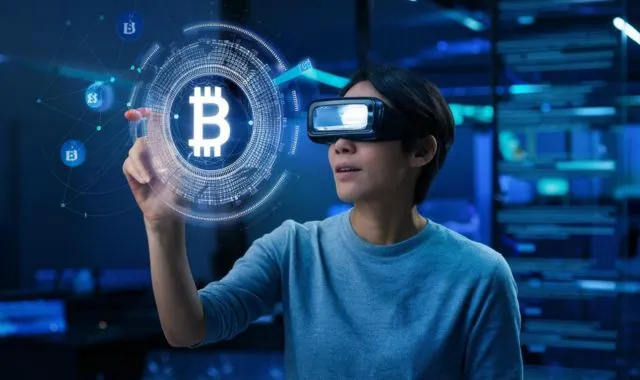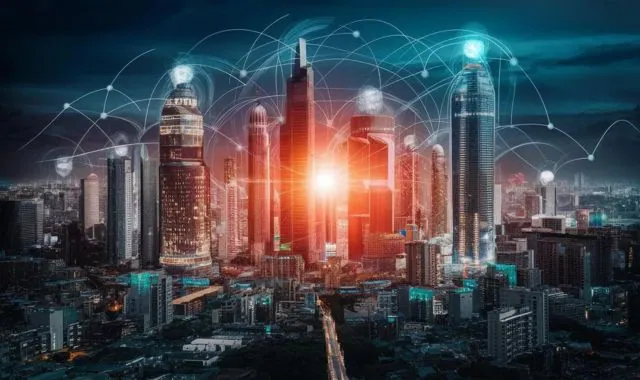Physical Address
304 North Cardinal St.
Dorchester Center, MA 02124
Physical Address
304 North Cardinal St.
Dorchester Center, MA 02124

Blockchain technology, beyond powering Bitcoin, offers a secure and transparent way to record information. This shared ledger system eliminates central authorities, making transactions verifiable and tamper-proof. From supply chains to healthcare, blockchain holds immense potential to reshape industries and empower individuals.

Have you heard whispers of a revolutionary technology that promises to transform everything from finance to healthcare? That technology is blockchain, and it’s here to stay. But what exactly is blockchain, and how does it work? Don’t worry, we’re here to shed light on this complex concept and make it easy to understand.
Let’s break down blockchain into its core principles:
Imagine a giant spreadsheet, meticulously recording every transaction. This spreadsheet is constantly updated and accessible to everyone involved. That’s essentially what a blockchain is – a digital ledger that keeps a transparent and secure record of transactions.
Unlike traditional systems controlled by a single entity (like a bank), blockchain distributes information across a network of computers. This eliminates the need for a central authority, making the system more democratic and resistant to manipulation.
Once a transaction is recorded on a blockchain, it’s practically impossible to alter it. Each block is cryptographically linked to the previous one, creating an unbreakable chain of information.
With blockchain, all participants can access the transaction history. This fosters trust and accountability, as everyone can see what’s happening on the network.
Now that we’ve grasped the core concepts, let’s delve into the mechanics of blockchain:
Information is grouped into blocks, which hold data like transaction details and timestamps. These blocks are then chained together chronologically, forming the, well, blockchain.
Miners are special computers that solve complex mathematical puzzles to verify transactions and add new blocks to the chain. This process secures the network and is rewarded with cryptocurrency.
Cryptography plays a vital role in blockchain security. It utilizes complex codes to encrypt data within blocks, making it virtually impossible to tamper with information.
For a new block to be added to the chain, a majority of the network needs to agree on its validity. This is achieved through consensus mechanisms, which ensure the integrity and security of the blockchain.
While Bitcoin is the most famous application of blockchain, its potential stretches far beyond cryptocurrency:
Blockchain can track the movement of goods from production to consumption, providing real-time data on origin, quality, and even environmental impact.
Blockchain can revolutionize voting by offering a secure and transparent system. Votes are permanently recorded and auditable, reducing the risk of fraud and manipulation.
Patients can control their medical records stored securely on a blockchain. This empowers individuals and improves access to information for healthcare providers.
Non-fungible tokens (NFTs) leverage blockchain to verify ownership of digital assets like artwork or collectibles, creating a new frontier for digital ownership.

The potential applications of blockchain are truly boundless. Here’s a glimpse into what the future holds:
Blockchain can automate processes, reduce transaction fees, and provide financial services to the underbanked population.
Blockchain can give individuals ownership and control over their personal data, fostering a more secure and privacy-conscious online environment.
Blockchain can act as a trusted third party, verifying transactions and agreements without the need for intermediaries.
While blockchain is brimming with potential, it’s not without its challenges:
Current blockchain systems can struggle to handle large volumes of transactions. Scaling solutions are being developed, but it’s an ongoing area of focus.
The process of mining cryptocurrency can consume significant amounts of energy. Sustainable solutions are being explored to address this concern.
As a relatively new technology, blockchain regulation is still evolving. Governments and organizations are working to establish clear frameworks for its use.

The future of blockchain is bright. As the technology matures and overcomes current hurdles, we can expect to see even more innovative applications emerge. By embracing blockchain, we can create a more secure, transparent, and efficient world for everyone.
Whether you’re a business leader, a tech enthusiast, or simply curious about the future, it’s important to understand the potential of blockchain. This technology has the power to transform the way we live, work, and interact with the world around us. So, stay curious, get involved, and be a part of the blockchain revolution!
Here are some of the most common questions about blockchain technology, answered in a clear and concise way:
Cryptocurrency is a digital form of money secured by cryptography. Bitcoin, the most famous cryptocurrency, utilizes blockchain technology. However, blockchain has numerous applications beyond cryptocurrency.
Blockchain is a highly secure system due to cryptography, immutability, and decentralization. Tampering with data on a blockchain is extremely difficult.
Blockchain has the potential to impact many aspects of your life. It can improve transparency in supply chains, revolutionize voting systems, and give you more control over your data.
There are various ways to get involved in blockchain. You can invest in cryptocurrencies, blockchain-based companies, or even digital assets like NFTs. However, thorough research is crucial before making any investment decisions.
Scalability, energy consumption, and regulation are current challenges facing blockchain technology. However, developers are actively working on solutions to address these limitations.
The future of blockchain is promising. With continued development and adoption, this technology has the potential to transform numerous industries and create a more secure and efficient digital world.